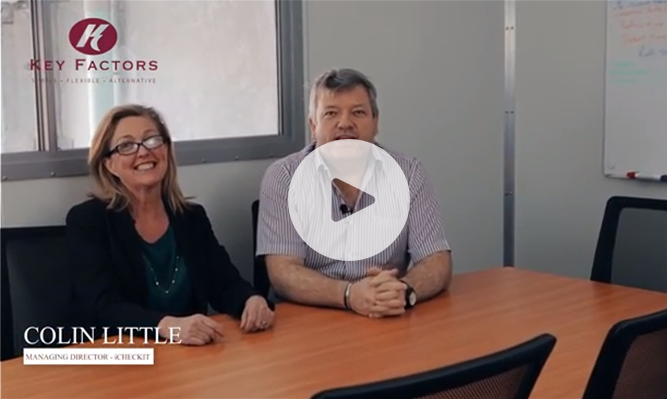Guide to Factoring of Accounts Receivables
By Ram - Jan 19 2024
Businesses have several solutions to their cash flow gaps. Accounts receivable factoring is one of them and one that is turning out to be the most preferred by businesses.
Cash flow gaps can hinder the operations of a business, and unfortunately, studies from the Australian Securities and Investment Commission have shown an increased number of insolvent companies that cite inadequate cash flow as the cause of the failure, which currently stands at a staggering 51.2%.
Why not also read: What is Receivables Financing?
For the longest time, businesses have relied on traditional lenders to plug their cash flow gaps. The problem with this approach is that such loans take a long time, many taking up to three months to get approved. Also, banks have strict lending requirements that lock out many businesses from the loan facility. With accounts receivable financing, you have a more flexible, convenient, and efficient way to inject cash into your business when needed.
What is Accounts Receivable Factoring?
Accounts receivable factoring is a type of financing facility that lets the business control its cash flow by leveraging its unpaid invoices as collateral to get funding. This method of financing is also known as accounts receivable financing or invoice factoring.
Another reason accounts receivable factoring has been on the rise is that many businesses prefer to get funding without tying up their assets, such as property in security. With invoice factoring, the business uses unpaid invoices as assets to access immediate funding to cover operational costs and even fuel the business’s growth.
Why Accounts Receivable Factoring is Important for Businesses
Lack of cash flow is the leading reason for businesses failing in Australia. Every business must maintain enough working capital to keep the business running and promote growth.
Unfortunately, there’s no self-sufficient business. Every business relies on its customers to make payments on time. But that is not always the case. Late payments are a common problem in business, with many customers exceeding the agreed payment period.
As a result, businesses have used accounts receivable factoring as a solution to avoid cash flow gaps created by late payment of invoices.
How Accounts Receivable Factoring Works
Accounts receivable factoring works slightly differently depending on the factoring company you use. Different services have different requirements, fees and advance payments for their clients.
We keep the process simple at Key Factors and help businesses get their money quickly. It all starts with you delivering an order or service to the client and raising an invoice for the amount due. The recipient or the client is typically given 30 days to pay the invoice. If the invoice is paid late, that means the business waits even longer to get paid.
While waiting for the invoice to be paid, you still need to make payroll, pay suppliers and cover other overheads to keep the business running. You also need to complete new orders from new clients.
This is where our accounts receivable factoring can come in handy. It can help you maintain working capital by using the unpaid invoice as collateral to access funding for your business.
Replace with: Invoice your clients and send us a copy. We will factor your invoices and advance up to 80% of the invoice value minus our fee. When we get paid, you receive the remainder amount.
Benefits of Accounts Receivable Factoring
As mentioned earlier, businesses have various financing options available to them. Accounts receivable factoring is one of them, and it has many unique advantages that can be tailored to the needs of your business. These benefits include;
Improved cash flow
The role of cash flow in a business cannot be understated. Waiting 30 days to collect receivables can drain the business and stunt its growth. With accounts receivable factoring, you can unlock those unpaid invoices and convert them into cash to care for your operating or growth needs. The quick turnaround and availability of cash through accounts receivables factoring means businesses get money when needed and don’t have to wait for weeks or months to get approved.
Risk management
Accounts receivable factoring can also be a way for businesses to mitigate risks. When dealing with clients, even after extensive credit checks, the only way a business can be certain the client will pay the invoice is when they pay it. Through invoice factoring, you can mitigate risks by ensuring you get up to 80% of the value of the invoice as you wait for the client to clear the invoice.
Avoid long-term debt
Most loan facilities extended to businesses by conventional banks take years to pay and lock up the business’s most valued assets. These also add to the business’s overhead because of the monthly loan repayment instalments. With accounts receivable factoring, you don’t have to take out loans to keep your business operations. Factoring is a flexible source of business finance that allows you to access funds when needed. With our selective invoice factoring, you choose the invoices you want to finance and the finance period.
Fast access to funding
Once your application is approved, you get up to 80% of the value of the unpaid invoice within 48 4 hours. Unlike traditional loans that take months to get approved, you get funds quickly and conveniently with accounts receivable financing.
How Much Does Accounts Receivable Factoring Cost?
We charge a factoring fee for the service. The fee is a percentage of the receivables being factored, which depends on the time it takes to pay the invoice. We are straightforward and upfront with our fees and clearly help you understand your commitment before we extend the facility to you.
Why not also read: Invoice Discounting Vs Supply Chain Financing

